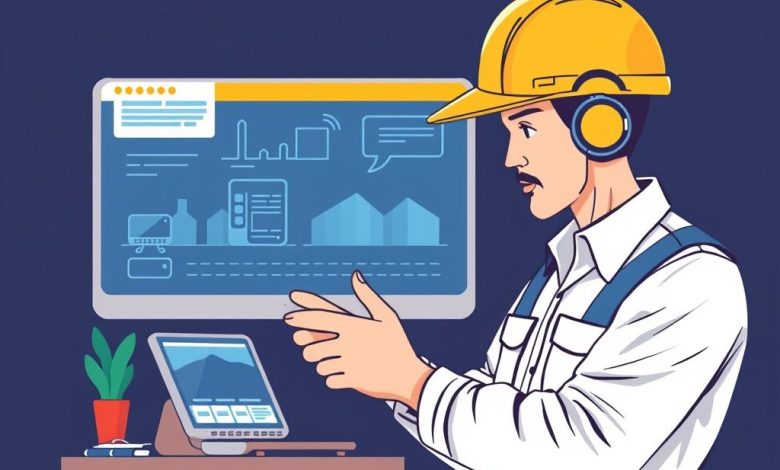Field Service Management with Real-Time Video Support Revolutionizing Remote Assistance

Introduction
In today’s fast-paced business environment, field service management has become increasingly crucial for companies looking to streamline operations and improve customer satisfaction. The integration of real-time video support has revolutionized this industry, enabling technicians to provide more efficient and effective services remotely. This article will explore the concept of field service management with real-time video support, its benefits, challenges, and best practices for implementation.
What is Field Service Management?
Field service management refers to the process of coordinating and managing tasks performed outside of a traditional office setting. It involves scheduling appointments, dispatching technicians, tracking work orders, and ensuring timely completion of jobs. In essence, it’s the backbone of many industries such as HVAC, electrical, plumbing, and home maintenance services.
Key Components of Field Service Management
- Scheduling and Dispatch
- Efficient allocation of resources based on job priority and technician availability
- Automated scheduling systems to minimize wait times and optimize routes
2. Work Order Management
- Centralized platform for creating, assigning, and tracking work orders
- Real-time updates on job status and progress
3. Inventory Management
- Tracking of equipment and supplies needed for each job
- Automatic reordering and restocking of inventory
4. Customer Relationship Management (CRM)
- Database of customer information and service history
- Communication tools for scheduling and follow-ups
5. Reporting and Analytics
- Insights into operational performance and efficiency metrics
- Identification of trends and areas for improvement
The Role of Real-Time Video Support in Field Service Management
Real-time video support has emerged as a game-changer in the field service industry. By integrating video conferencing capabilities into the field service management system, technicians can now provide remote assistance to customers, reducing the need for physical visits in many cases.
Benefits of Real-Time Video Support
- Reduced Travel Time and Costs
- Technicians can diagnose issues remotely before scheduling an on-site visit
- Minimizes unnecessary trips, saving time and fuel costs
2. Improved First-Time Fix Rates
- Technicians can visually inspect equipment and guide customers through troubleshooting steps
- Increases the likelihood of resolving issues during the initial contact
3. Enhanced Customer Experience
- Provides immediate assistance, reducing frustration and wait times
- Allows customers to see what the technician sees, increasing trust and understanding
4. Increased Efficiency
- Reduces the need for repeat visits due to misdiagnoses
- Enables simultaneous work on multiple issues during a single visit
5. Cost Savings
- Reduces labor costs associated with repeated visits
- Extends the life of equipment by addressing issues promptly
Challenges in Implementing Real-Time Video Support
While the benefits of real-time video support are numerous, there are several challenges that need to be addressed:
Technical Issues
- Ensuring stable internet connectivity for both the technician and customer
- Managing bandwidth requirements for high-quality video streaming
- Addressing compatibility issues with different devices and browsers
Privacy Concerns
- Ensuring secure transmission of sensitive information
- Complying with data protection regulations such as GDPR
- Addressing concerns about remote access to customers' homes or businesses
Training and Adoption
- Educating technicians on the effective use of video conferencing tools
- Changing the mindset of both technicians and customers to embrace this new technology
- Overcoming resistance to change within the organization
Best Practices for Implementing Field Service Management with Real-Time Video Support
To maximize the benefits of field service management with real-time video support, consider the following best practices:
- Choose a Comprehensive Field Service Management Software
- Look for software that integrates video conferencing capabilities natively
- Ensure the system is user-friendly for both technicians and customers
2. Invest in High-Quality Equipment
- Provide technicians with reliable laptops or tablets equipped with good cameras and microphones
- Ensure customers have access to devices capable of supporting high-quality video calls
3. Develop Clear Communication Protocols
- Establish guidelines for effective communication during video calls
- Train technicians on active listening skills and clear explanation techniques
4. Implement Robust Security Measures
- Use end-to-end encryption for all video communications
- Regularly update software and security protocols to protect against cyber threats
5. Conduct Regular Training Sessions
- Offer ongoing training for technicians on new features and best practices
- Gather feedback from both technicians and customers to continuously improve the service
6. Integrate with Existing Systems
- Ensure seamless integration with other business systems like CRM and inventory management
- Automate workflows where possible to reduce manual intervention
7. Monitor and Analyze Performance Metrics
- Track key performance indicators such as first-time fix rates and customer satisfaction scores
- Use data insights to identify areas for improvement and optimize processes
Conclusion
Field service management with real-time video support represents a significant shift in how companies approach customer service and operational efficiency. By leveraging this technology, organizations can provide faster, more cost-effective solutions while enhancing the overall customer experience.
As the field service industry continues to evolve, it’s crucial for managers to stay ahead of the curve by embracing innovative technologies and adapting their strategies accordingly. The integration of real-time video support into field service management not only improves operational efficiency but also sets a new standard for customer-centric service delivery.
By implementing these strategies and overcoming the challenges associated with real-time video support, field service managers can position their companies at the forefront of technological innovation in their respective industries. As we move forward, one thing is certain – the future of field service management will be shaped by the power of real-time video support.



